Table of Contents
Five Star Alpine Tourism
In the oracle of mountain sports, the Alps occupy the highest status. The Alps are where it all began, where the greatest athletes train, and the measuring stick upon which all other ranges are compared. It was always one of the places I knew I would visit someday, but after seeing friends race in Chamonix last August, I realized that it was not as expensive or hard to get to as I thought. Throughout the winter, Kelly and I planned a trip to the Alps in July of 2022.
Like always, I find the process of researching a region enjoyable. The Alps are vast and I knew literally nothing about them, but through talking to friends and perusing Caltopo, I was able to get an idea of the places I wanted to visit. It began with the towns: Chamonix was the center of mountain culture and we needed to experience that, Aosta was a sleeper mountain town recommended by our friend Ely, and the classic towns of Zermatt and Interlaken in Switzerland were too iconic not to visit.
Chamonix
Kelly and I arrived in Geneva early in the morning on July 4, picked up the rental car, and we were on our way to Chamonix. The mountains became enormous out of nowhere. I had an issue in Chamonix where I could not figure out how to reverse our little stick shift Euro car (I had only driven a few sticks before, and none of them had a reverse gear like this one). We were not really sure what to do with our first day so we drove up to the Brevent lift, got out of the car, and immediately stumbled into our friends Andi and Eric, who were on their honeymoon. No way! A crazy coincidence, so we all took the lift up and hiked to Brevent to enjoy an expensive lunch together.

Chamonix is mind blowing. Mont Blanc towers more than 10,000 ft above town so steeply that you have to crane your neck upwards to see the top. The Aiguille du Midi and other rock spires remind me of the Wine Spires at Washington Pass, but twice the size and there is a cable car to the top of them!
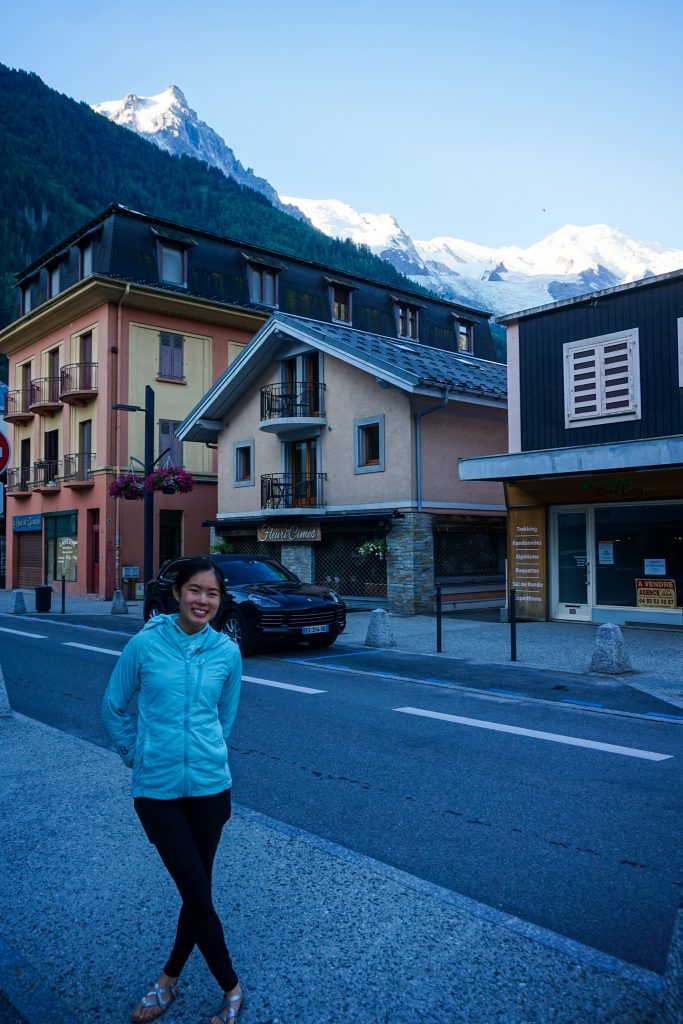
I heard jokes that people walk the streets of Chamonix in La Sportiva Nepals (or other equivalent four season mountaineering boots) with ice tools on their pack, and it actually turned out to be true! And with the Aiguille du Midi whisking you 9,000 ft upwards to a glacial massif directly from town, it actually kind of made sense… Nearly all the stereotypes about Euro mountain culture turned out to be true: the bright colors, the overkill mountaineering boots, the baked goods, the abundant lifts, the expensive water at refugios. In America, we hear so much about Chamonix and affectionately name our favorite places after it like “Snoqualminix”. It was cool to experience this mythical world center of mountain culture.
On our second day, we did a nice hike around Le Tour and some cragging. In general, the valley cragging in Chamonix seemed rather unimpressive compared to American cragging. The rock was often kind of jank and it was mostly slabby sport climbing. There is no granite whatsoever down low. Multiple people mentioned to me that I must be good at crack climbing since I was from America. I did not think about it that way, but I guess we have way more cracks than Europe.
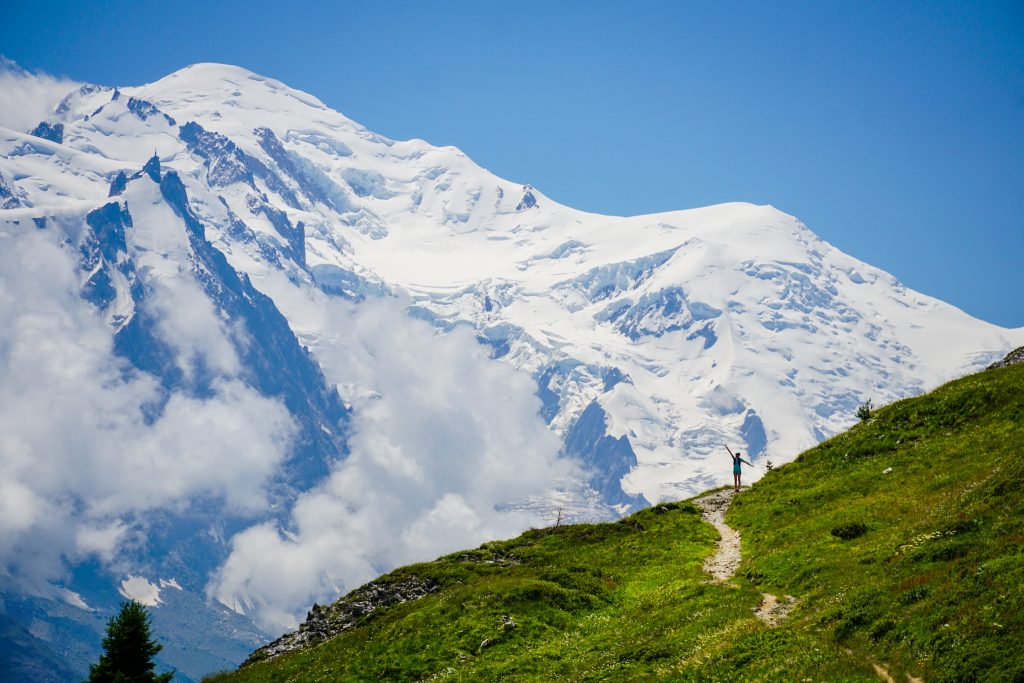
On my thrid day, I decided to go for my biggest objective of the trip: a traverse from Le Buet to Chamonix across a long alpine ridge. This traverse ended up being a wonderful adventure with challenging terrain, beautiful views, and surprising solitude. I chose so many of my objectives just by selecting “trails” on Caltopo with no knowledge if the trail was a via ferrata or so no traffic. This sort of planning naturally lead me to stunning but obscure spots. Sometimes it got me into some unexpected spots, but it was never anything I could not handle. This was a long, hard day, but very memorable.
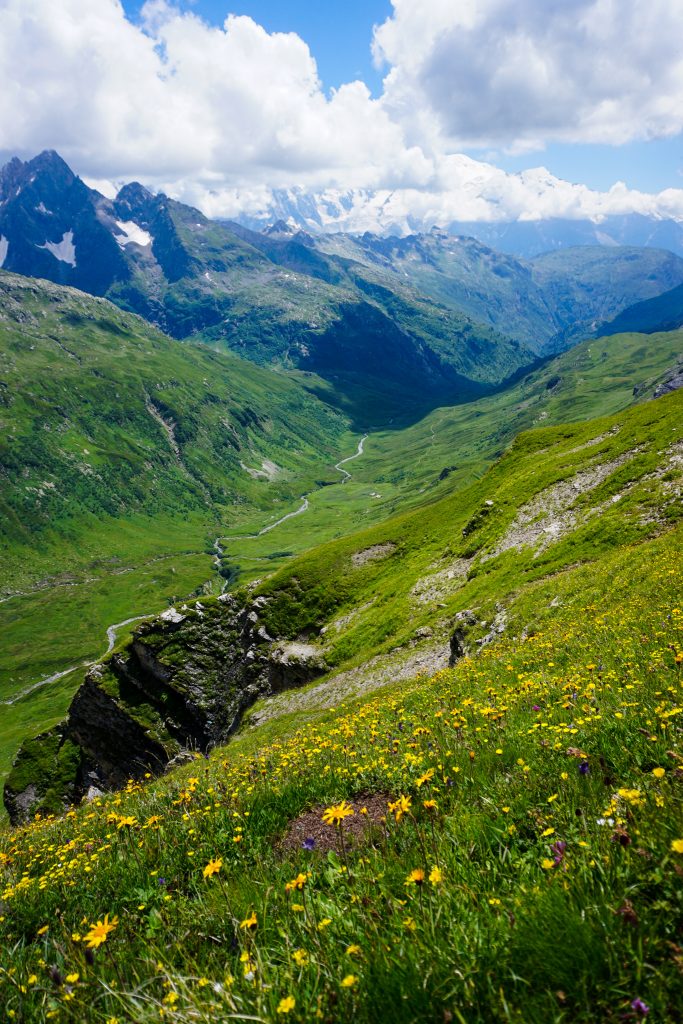
I had asked the famous guide Ben Tibbetts for easy rock recommendations and he recommended Aiguille Index, a small rock spire above town. Because it sits no more than five minutes away from the top of a lift, it is extremely popular. We took a lift up and found 10 people already waiting for our planned route, so we switched to a different sport route. At the top of the first pitch, a French guide passed me, belaying his two ignorant French clients on a single bolt. At one point the rope got caught around my neck, but the guide did not seem to care. Down at the base Kelly said that the guide had to tie the knots for the clients because they had not clue what they were doing.
As the clients (a mom and her son) passed me, I asked the if they were concerned that the guide was belaying them on single bolt. She responded defiantly “No!” and then a moment later asked me “Should we be?” As I climbed up, I found them stuck with a snagged rope. The mom asked me in an annoying tone “Can’t you just wait for us a moment?” and I responded “Well you couldn’t wait for me, could you?” Then she remembered she could just pull our her cell phone and text the guide that they had a problem. How Euro!!! I just climbed above them and un-stuck their rope so they could continue upwards. I barely got a thanks. Classic French. (To be clear I had mostly positive interactions with French people, but also every negative interaction in Europe involved a French person).
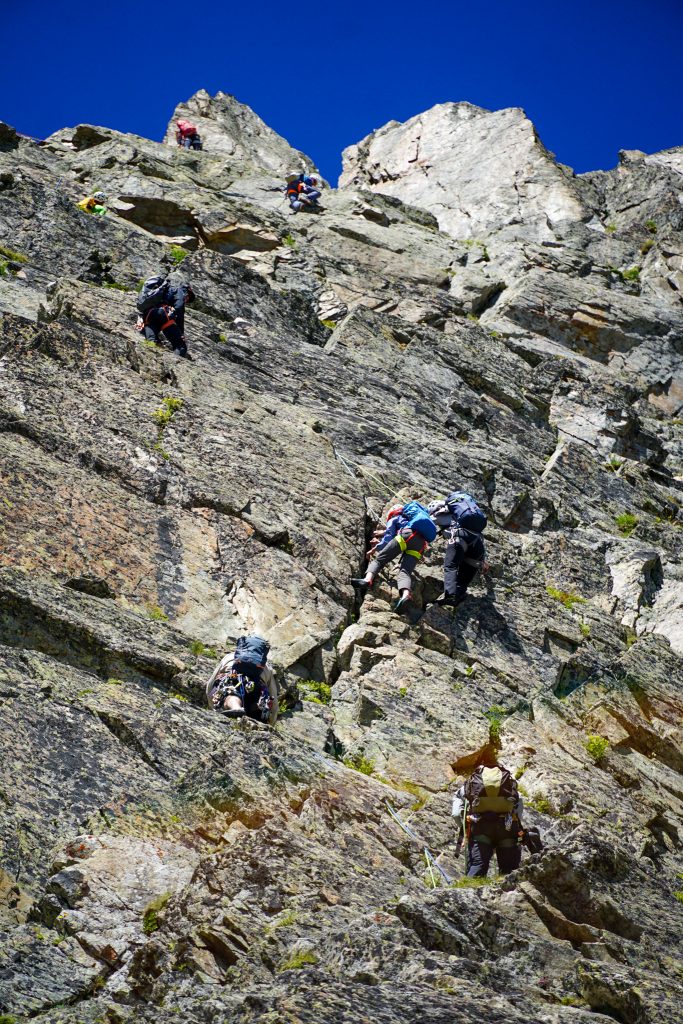
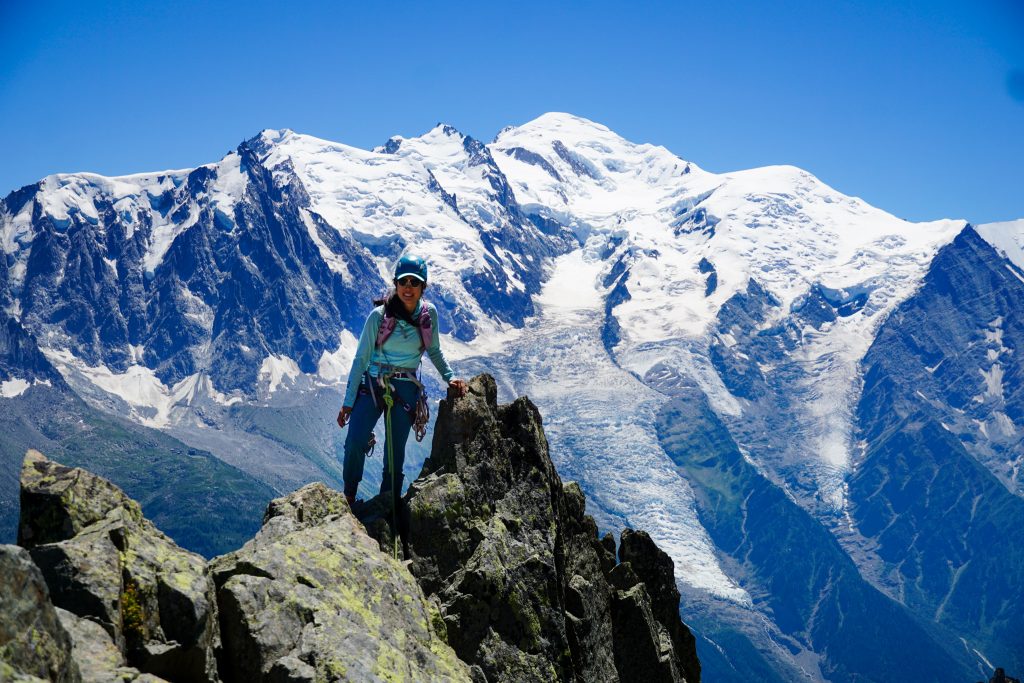
We left Chamonix the next morning, enjoying a 90 minute traffic jam to get into the Mont Blanc tunnel (do not try to go through this tunnel on a Saturday morning). Chamonix is incredible, with unparalleled access to the Mont Blanc Massif and incredibly steep terrain in all directions. Now we were on to Aosta!
Aosta
Aosta is a real Italian town set deep in the Aosta Valley of Italy. This is just the other side of the Mont Blanc Massif, but Aosta itself is a ways down valley, lower elevation, and in a drier climate. There are windy roads and little villages thousands of feet up every valley and hillside. Dozens of valleys converge in Aosta, radiating from high 4000m peaks in all directions. We first learned about Aosta from Ely, who ran Tor des Géants last year.
We had an Airbnb in the cute downtown, which was void of cars and had those quintessential cobblestone streets and pink and yellow covered shops. The food was impressively good and cheap in Aosta. We had already grown tired of the carb-heavy Euro diet and sought veggies and other nutrients. Our favorite place was an all-you-can-eat sushi place that was only $15 at lunch! We usually followed up dinner with tasty, cheap gelato.
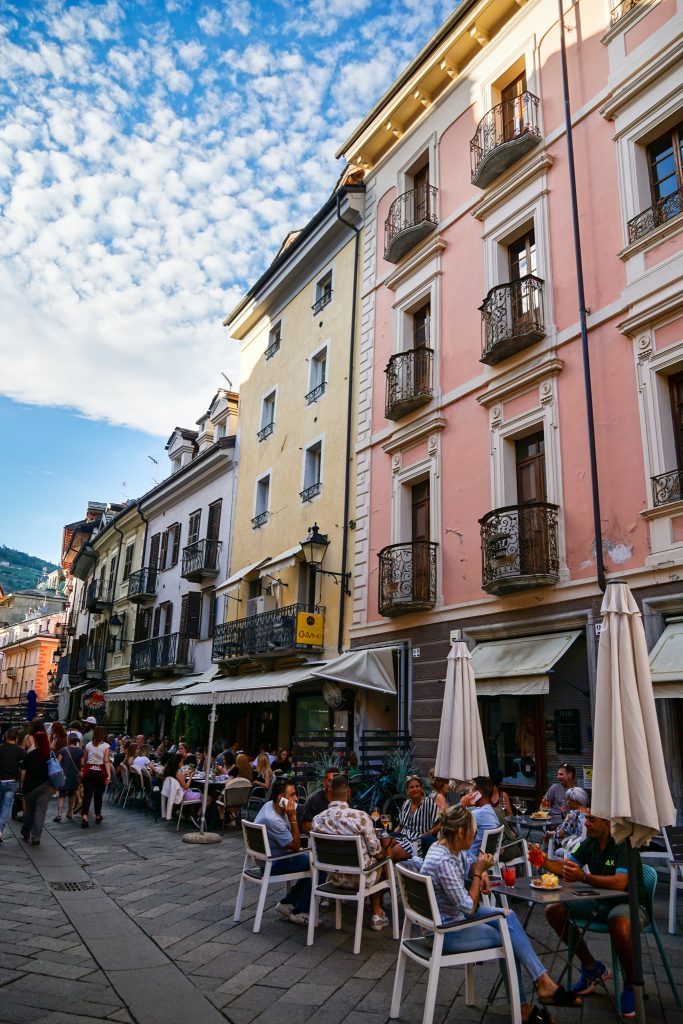
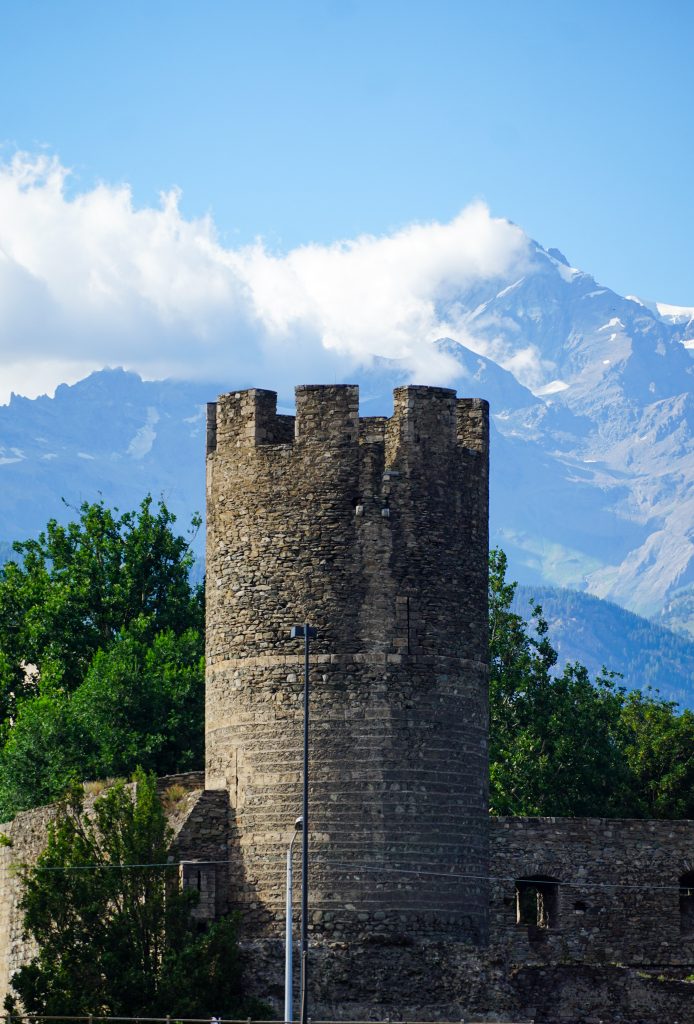
The main downside of Aosta was the heat. It was in the 90s each day and our top floor apartment had mediocre air conditioning so we became accustomed to interior temps in the mid 80s. It also made it too hot to attempt all of the awesome looking sport climbing in the valley (it looks much better and more vast than Chamonix).
My German friend Silvia, who helped us plan various parts of the trip, recommended Gran Paradiso National Park, so Kelly and I went out the next day to Monte Teu Blanc. This is definitely an area for Italian tourists and we were out of the ordinary as international tourists.
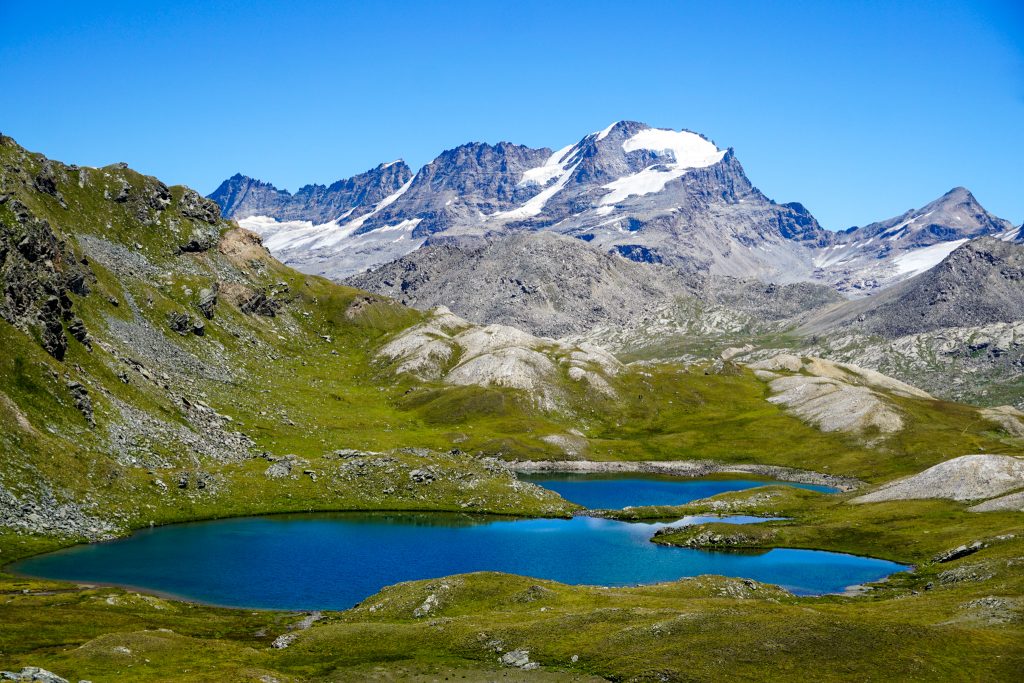
During the previous week, there was an interesting development. I had seen that Sean, aka Dr. Dirtbag, was biking and peakbagging in the Alps. I had never met him in person but figured I would see what he was up to. It turned out that he was trying to break the FKT for human powered ascents of all 82 4000m peaks and was looking for a partner for the most technical peaks. Our schedules were a bit in flux, but we made it work. I rented crampons and an ice ax and took the Monte Bianco Skyway up to the Mont Blanc Massif. One moment I was down in the valley, and the next I stepped off onto a high glacier. Access in the Alps is something else.
Sean and I had a great day climbing Arête du Diable, a technical traverse of 6 4000m peaks. There was climbing up to 5.8, but mostly mid 5th class with a fair bit of rappelling and a lot of scrambling. The verticality and beauty of the region was stunning. So was the glacial recession, which threatens alpine climbing itself in the Alps.
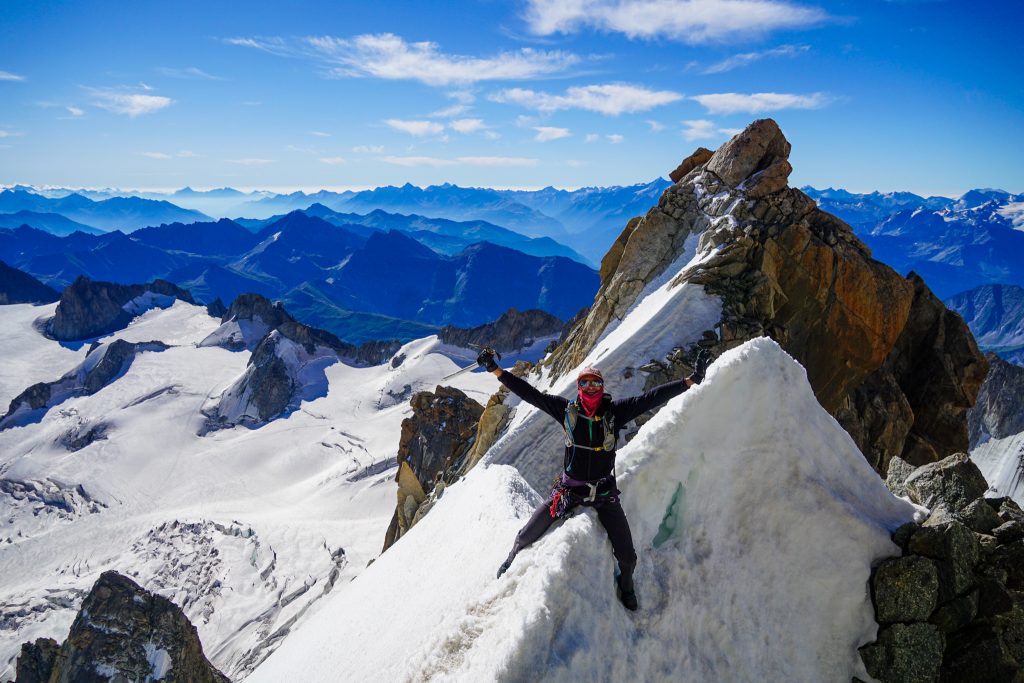
I felt at home on bomber granite and knife edge ridges. The altitude and less than ideal gear I possessed made the day more physical than otherwise, but we still flew by all the other parties on route. It was one of those experiences that was neither too easy nor challenging – just perfect.
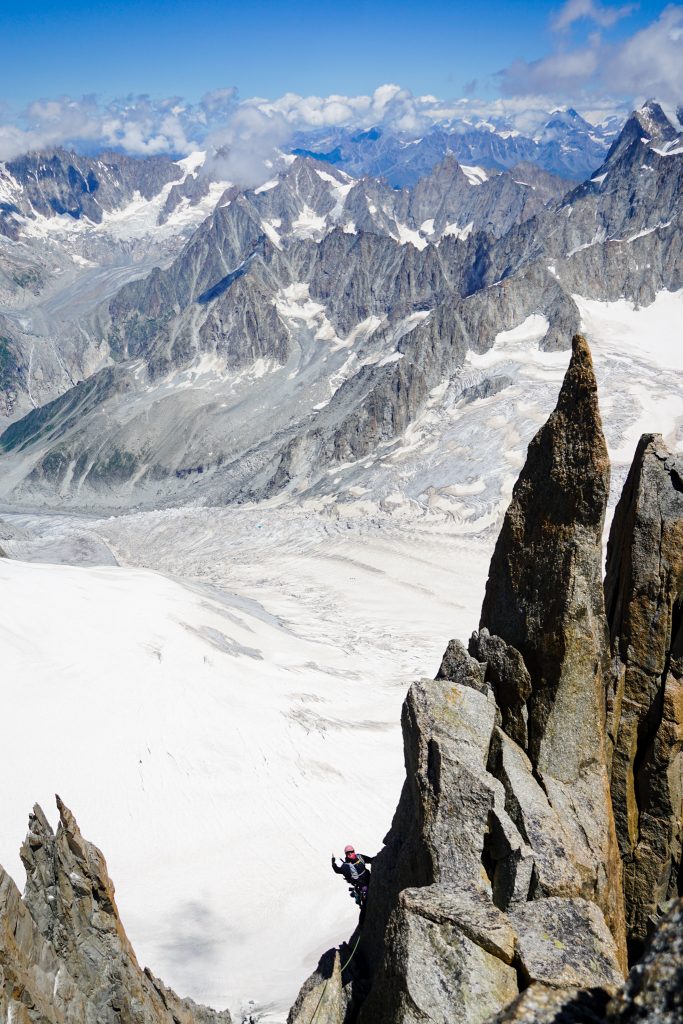
We spent the night in the Cosmiques Hut and experienced one of the most beautiful sunsets I have ever seen. I definitely want to come back to Chamonix / Mont Blanc and spent a few days up here, climbing beautiful granite and staying at these huts. It is a different world up here – some of the steepest terrain I have ever seen, but also the comforts of civilization.
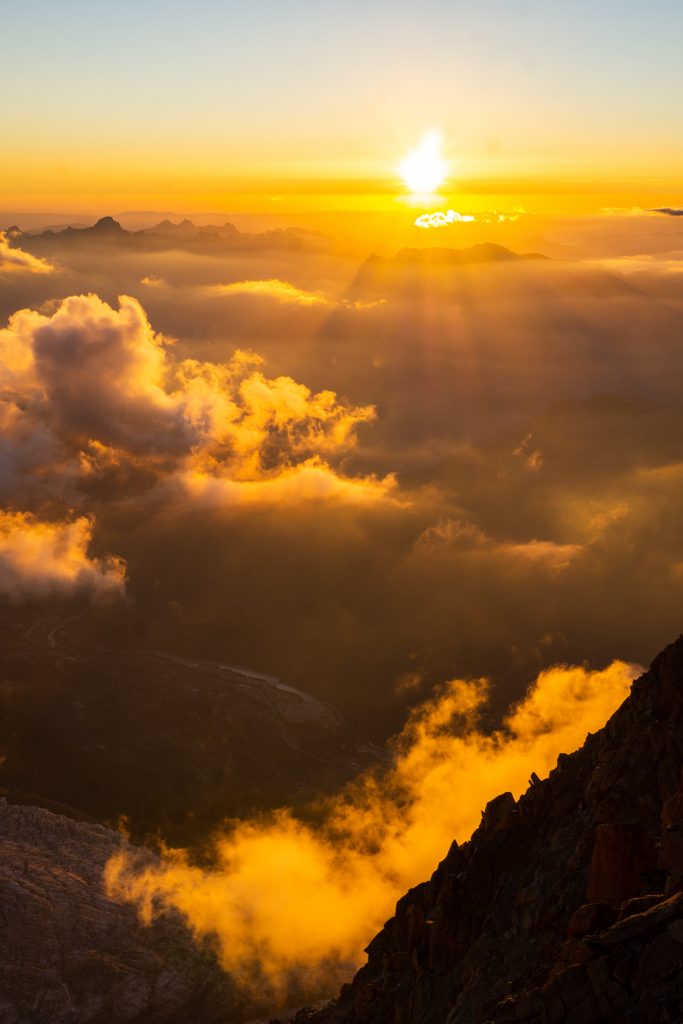
I laid low for a few days, eating food, visiting historical sites, and doing some cragging with Kelly. Kelly was also happy with the rest, since she was tired from her first week in Chamonix, where she tried to do too much while still working in the evenings. I was completely off from work, which was nice.
By the end of the week, I felt recovered enough to go for Monte Emilius, a peak that towers 10,000 ft above downtown Aosta. Once again, I naturally gravitated to the path less traveled, coming across an unexpected via ferrata that I think relatively few people do. Just when I thought it would become difficult, there was a giant suspension bridge across a chasm. This was a fun day exploring from my front door in Aosta.

The amount of infrastructure built in these mountains is incredible. I suspect that relatively few people do this via ferrata, but it had thousands of pounds of fresh metal and a giant suspension bridge. Who pays for all of this? Who maintains this? The use of helicopters certainly makes this easy. In America, we have crumbling forest service roads, overgrown trails, and endless blowdowns. In Europe, we encountered only one blowdown the entire trip. The Alps were generally void of the Bad B’s: blowdowns, bushwhacking, and bugs. Sometimes it felt just too easy. I am not one who intends for suffering, but honestly, the Alps often felt like cheating. Things were just so easy that I sensed myself becoming desensitized to the amazing alpine views. I felt like an “alpine tourist”. How we get there is just as important as where we are going.
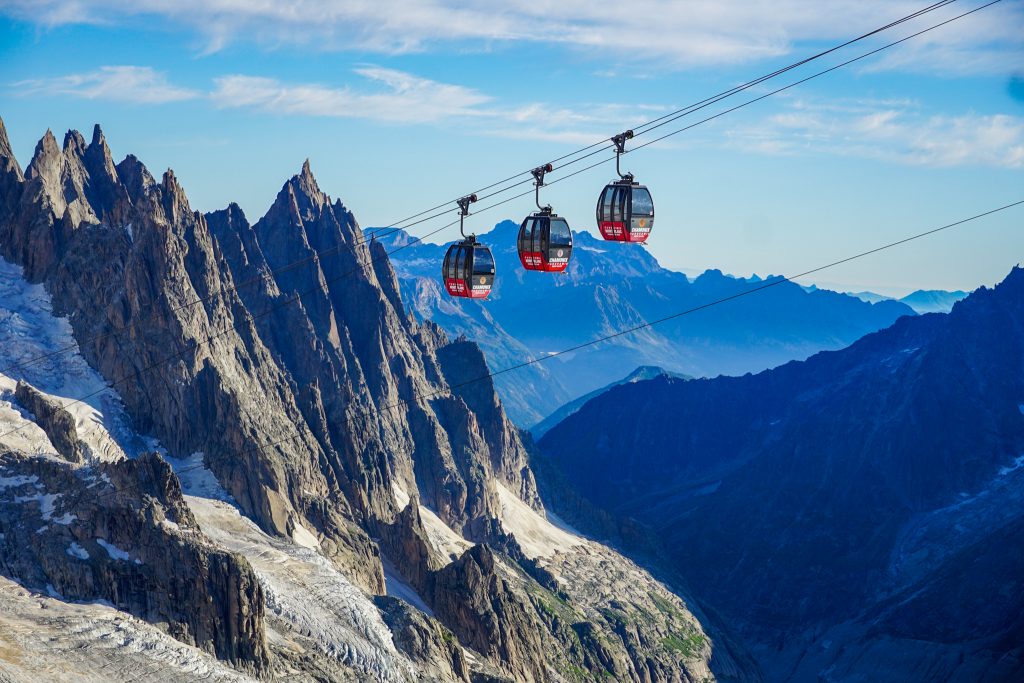
A few months ago, I had an internet stranger criticize some of my information sharing. The core of his argument was that we should not be encouraging more people to explore wilderness areas, because wilderness is integral to the outdoor experience. Traveling to Europe made me realize that wilderness is truly an American concept. There is no wilderness in the Alps. It is not necessarily crowded everywhere – in fact, most places are not very crowded at all – but there are always signs of people, whether it is a sign, hand line through a steep section of trail, jingle of a cowbell, or nearby ski lift. You just cannot get away from signs of civilization. People have inhabited these hills for thousands of years and it shows. If you grew up hiking in the Alps, wilderness would not be a concept you understood or a part of your mountain experience. Wilderness is important to me, but I have awareness that my values are a reflection of the environment I grew up in.
On the plane flight over, I read The Big Burn, a book about the great fire in Montana and Idaho in the early 20th century. It also talks in great detail about the creation of the forest service and conservationism. Without a few extraordinary individuals like Teddy Roosevelt and Gifford Pinchot, we might not have any real wilderness left across most of the West. Wilderness is not a happenstance of man, but rather a conscious decision. In Europe, civilization expanded into every nook and cranny of the mountains before any such conscious developed. The lack of wilderness is very noticeable. But I tried to not think of it as a bad thing, just different. I like how Sean puts it: the Alps are awesome, but different than mountains in the states. You can take a lift up, hike above a glacier, and get a tasty meal in a restaurant up there. The experience is different, and great. Just accept that it is different and awesome in its own.
We left Aosta happy with our time there. Of all the towns we visited, Aosta was the biggest surprise. We would definitely go back and spend more time, exploring more of the hiking, food, and rock climbing. It is much more affordable than the other towns and feels more authentic.
Zermatt
We drove over Col du Grand St Bernard into Switzerland, stopping for a short hike that had incredible views of the Grandes Jorasses and other peaks in the Mont Blanc Massif.
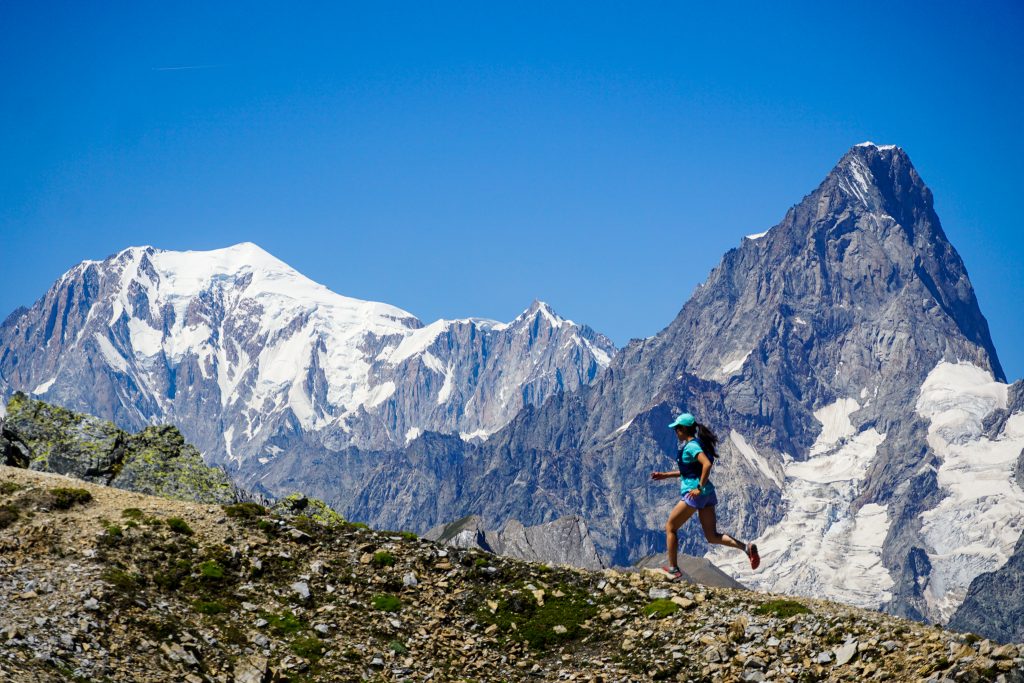
Zermatt is car-less, so we parked in Täsch and took the train to Zermatt. We bought the Swiss half-price rail pass, which definitely paid for itself. This got us half off on all trains and lifts. The normal trains between towns are fast and reasonably priced, but the lifts and touristy alpine trains are very pricey. Everything is expensive in Switzerland.
Zermatt was a bit of a shock to me. I thought Chamonix or Leavenworth or Jackson Hole was touristy. This was completely on a different level. You could buy $20,000 Swiss watches on the street. Some restaurant menus started at $100. There were advertisements for helicopter tours of the Matterhorn. Even a Big Mac costs $15. Our Airbnb was half a mile from the train station and up a hill, so carrying 100+ lbs of luggage in the heat was rough.
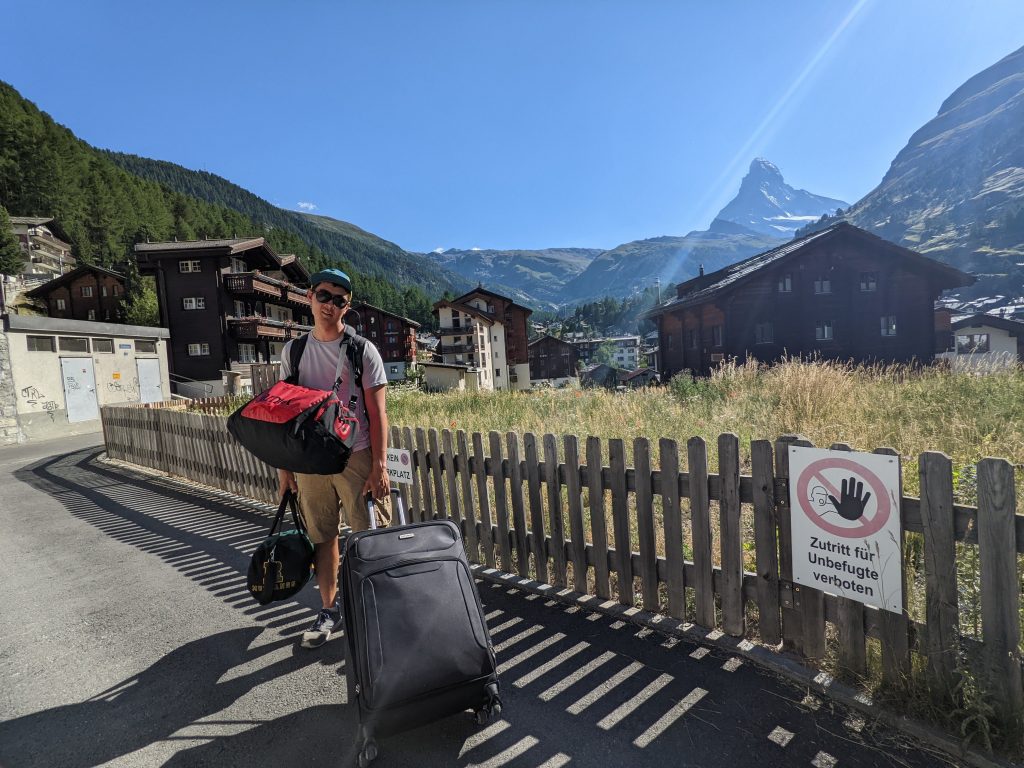
On our first full day in Zermatt, we took the overpriced train up and climbed The Egg on The Rifflehorn. In contrast to the debacle on Aiguille Index, this was a super pleasant day with fun, easy climbing in a beautiful position. Kelly finally had shoes that were comfortable enough for a multi-pitch, which also helped.
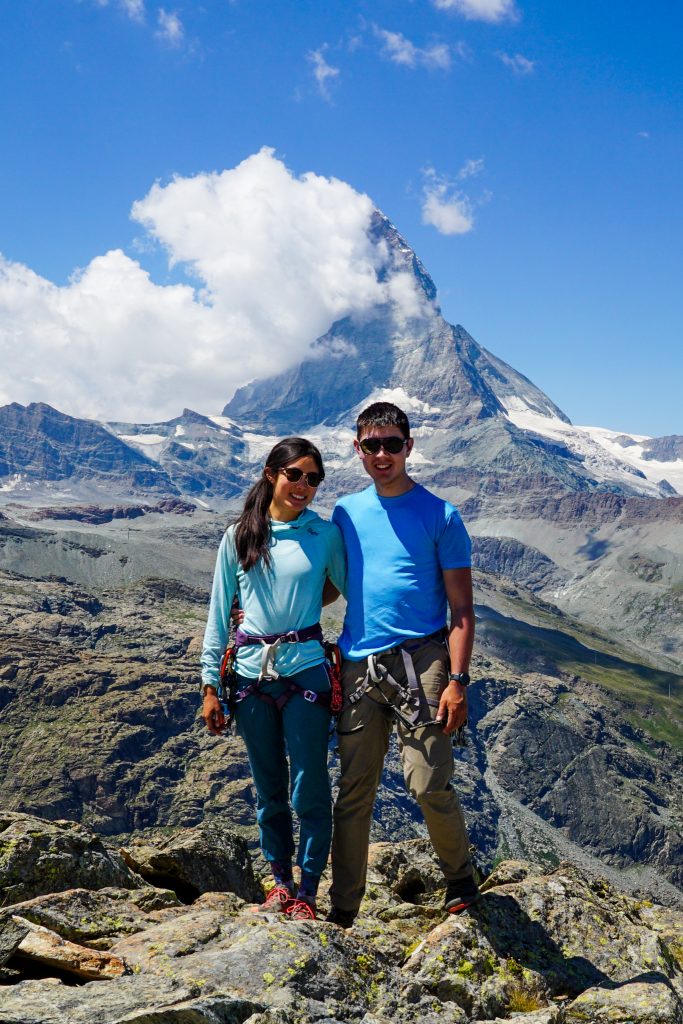
Kelly’s favorite part was just the cute touristy sheep.
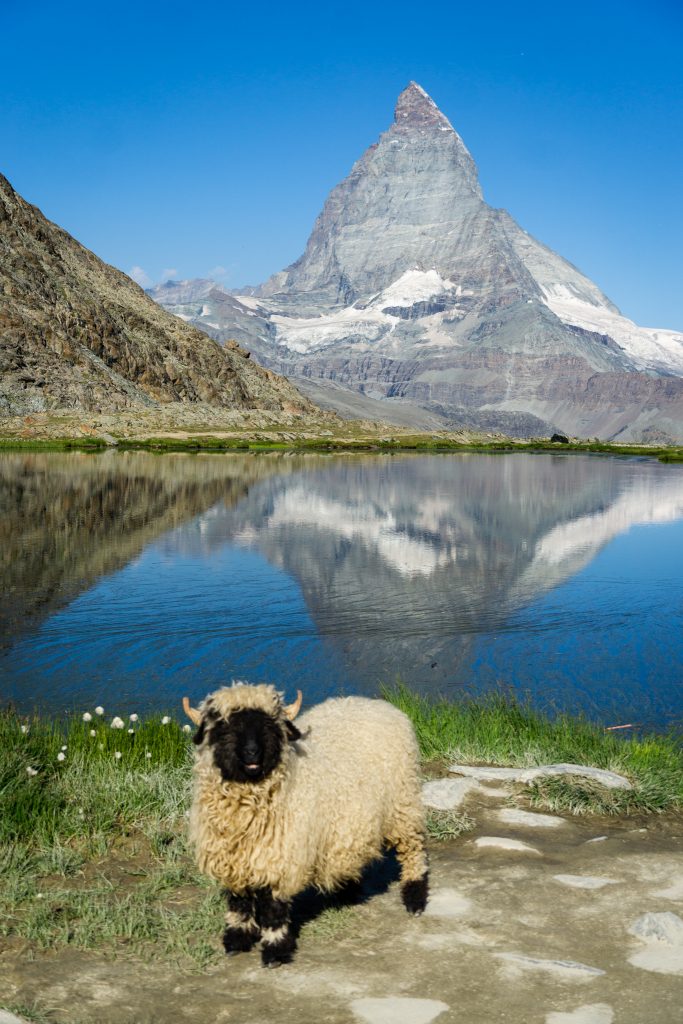
The next day, I went for a ramble around town (Tour Zurch Zermatt). I felt tired so maybe that affected my mood, but the “Matterhorn Glacier Paradise” was pretty sad with all the glacial recession. It seems like most of the ice here could be gone in my lifetime.
On our final day in Zermatt, we met up with a few of Kelly’s friends for brunch. They told us about this “Matterhorn Fitness Test” hike. It climbed 1800 ft in 0.8 miles, steeper than our local Cable Line. It had a sign indicating your readiness to climb the Matterhorn based on your time. 45 minutes was the cutoff to get a thumbs up, and we snuck just under it. It was a very entertaining experience. At the top, there was an alpine lake that resembled more of a kids’ swimming pool with a raft and lawn chairs. Then we took an underground elevator thingy back down in just a few minutes. Alpine tourism at its finest.

I probably would not go back to Zermatt except to ski or climb some of the 4000m peaks nearby. It was just a little too touristy for me. But it was cool to look at the most recognizable mountain in the world up close.
Hut Trip
I figured we should do at least one hut-to-hut trip since we were in Europe. There are huts everywhere, so it was a bit overwhelming to choose where to go. I turned to my friend Silvia, who recommended the huts from Kandersteg to Lauterbrunnen.
We hiked for a few days from Kandersteg to Lauterbrunnen. It was an enjoyable experience, with short hiking days and plenty of time to chill at the huts. The rooms get very hot and stuffy at night, especially if you get a top bunk. Be sure to bring a water filter so you can filter the tap water instead of paying $7 per liter for water.
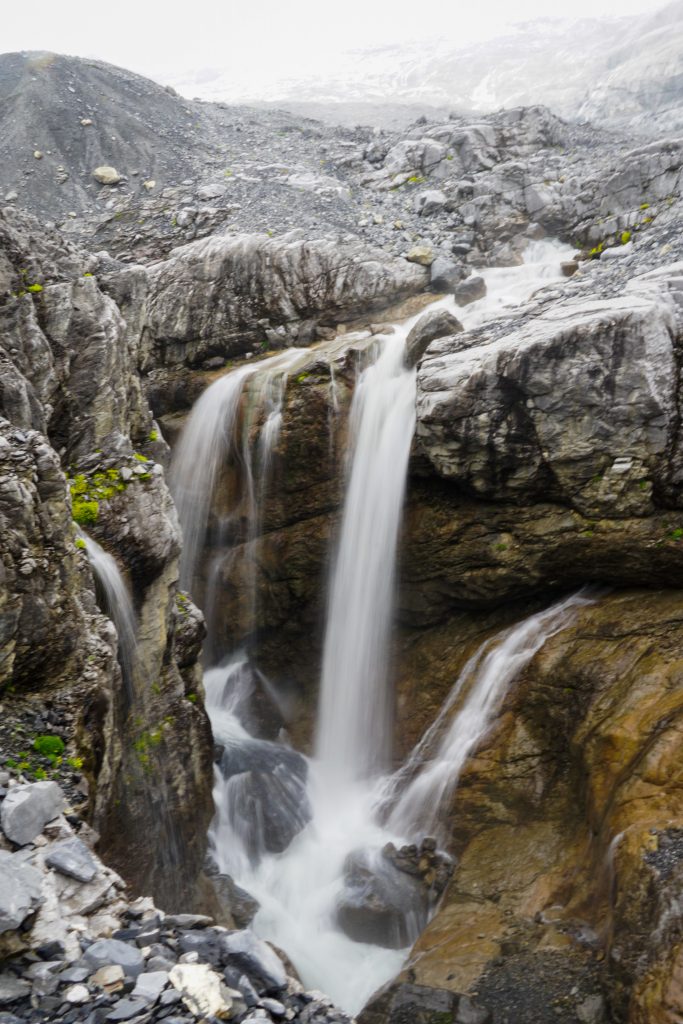
One morning I ran up the Gspaltenhorn at sunrise. This was a low 5th class peak, although nearly all the difficulties were removed by via ferratas. I understand installing via ferratas to allow hikers to access beautiful places, but isn’t the point of alpine climbing to encounter and surmount difficulties? Regardless, it was a beautiful morning and one of my favorite moments of the trip.

Lauterbrunnen felt like a magical place with all the waterfalls and base jumpers above you. It would be even more spectacular in the spring when there are vastly more active waterfalls!
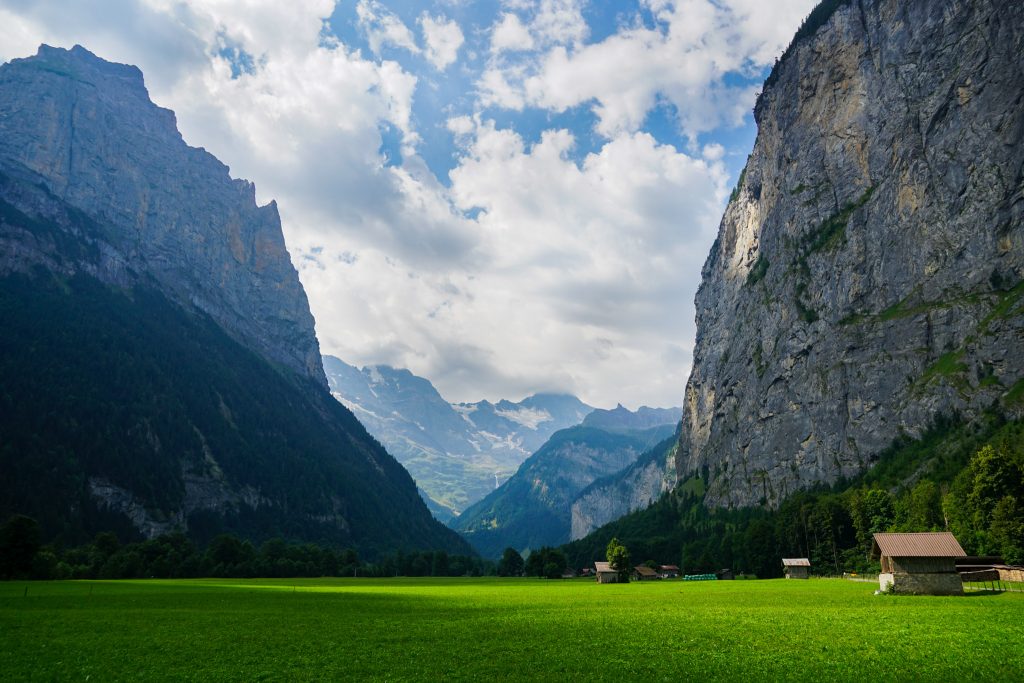
Recovering our car from Kandersteg was relatively easy with the Swiss trains, and then we drove to Interlaken for our final city.
Interlaken / Ringgenberg
Technically, we did not stay in Interlaken but rather Ringgenberg a few miles down the road. I did not think this would be a big deal, but it was definitely sub-optimal. It was not within walking distance of Interlaken but it is a pain to do short drives in Europe because finding parking can be challenging. There is no real grocery store in Ringgenberg and no real restaurants either. I would recommend actually staying in Interlaken.
People talk all about the Eiger Trail and if you Google “how to hike the Eiger Trail” you will get some 3000 word article listing dozens of trails and lifts describing some convoluted shuttle just to reduce the amount of hiking you have to do to the short two mile downhill section beneath the Eiger itself. In reality, it is very simple. Drive / bus to Grindelwald. Take a lift up. Hike down. The Eiger Trail was definitely the most overrated hike we did in Europe. The Eiger is so close that there’s no sense of scale. We started our hike further to the north and that was certainly the more beautiful section.
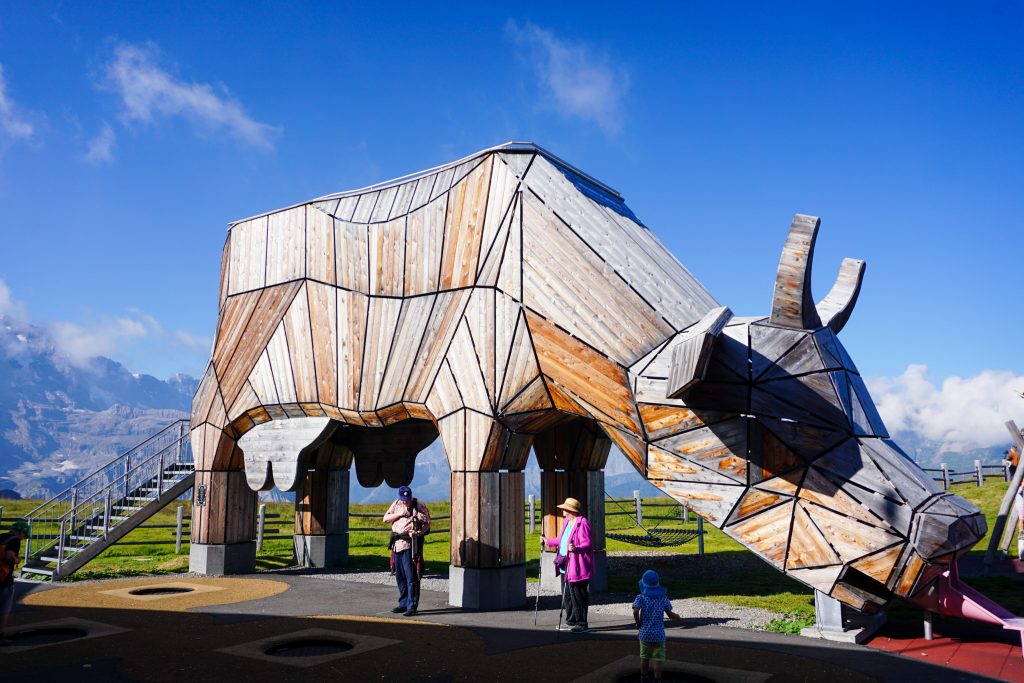
We had one last day of good weather, and so we chose to go out with a bang: the Hardergrat. The Hardergrat is a famous steep grassy hike above Interlaken. There are so many articles out there like “10 reasons NOT to hike the Hardergrat” that got us so intrigued. Was it really that sketchy? Could you really die if you fell? Curiosity convinced Kelly to attempt what would be the most vert in a single day for her.
Unlike most things, the Hardergrat actually lived up to the hype. It was stunning, steep, and pretty awesome. Kelly had to dig deep towards the end, but she got it done! It was an impressive day.
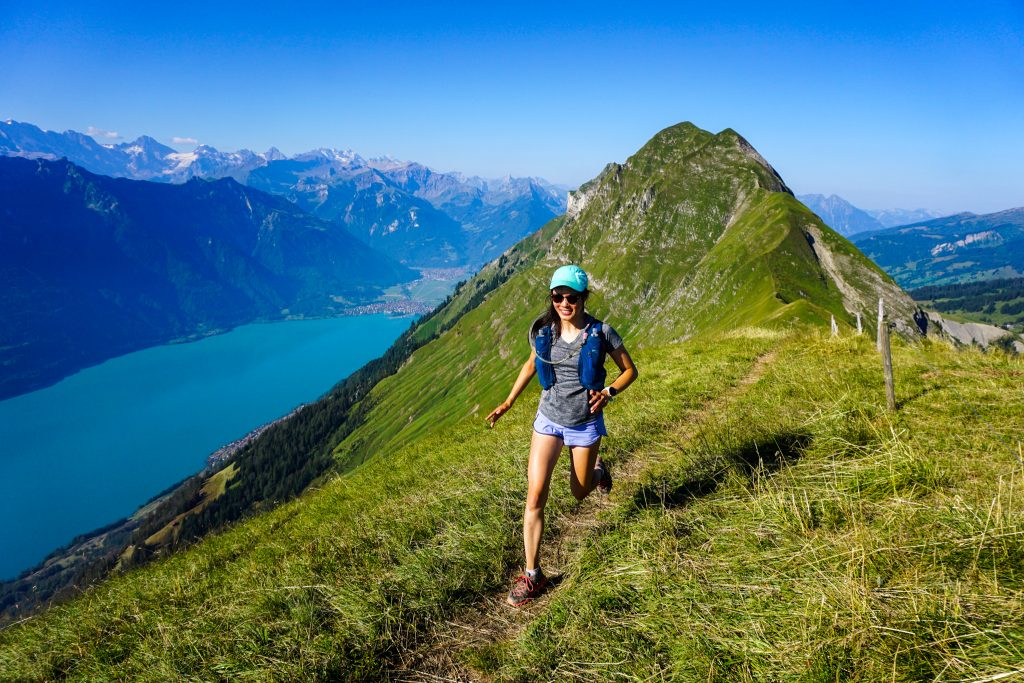
On our (supposedly) final night in Switzerland, we stayed in Lausanne with Kyle, one of Kelly’s college friends who is pursuing higher education in Switzerland. It was a nice change of pace from the mountain towns and thank you to Kyle for the hospitality!
Unfortunately, the return from Geneva to Seattle ended up being the crux of our trip. Our travel nightmares were so bad that I wrote a trip report about it. We stumbled home exhausted and frustrated, three days late. But in time, hopefully those negative associations with Europe will fade and we will remember this incredible trip together mostly in positive light. Fortunately, it usually works that way.

Q&A
Now I am going to do a pseudo Q&A (although I will be the one both asking and answering most questions) about our trip to Europe. Even Kelly will answer a few of the questions!
So what are your overall impressions of Europe and the Alps?
Kyle: It’s amazing and so very different than any place I had ever been to. The access is mind boggling. I knew there were lifts around, but it takes going to Chamonix, riding the Aiguille du Midi up 9,000 ft, and stepping onto a glacier to fully comprehend it. It is easy to see why the best mountain athletes in the world train here. The culture is also so very different. Mountains feel like a part of every day life and are mainstream possibly because of the history here and they fact they are so much more accessible.
Kelly: The alps definitely have much better access than the US. Wilderness doesn’t really exist in Europe because humans have been living in every valley for centuries. Taking lifts up and eating actual food on hikes is great – I despise most trail snacks (Kyle said I would rather starve than eat trail mix, which is pretty accurate). Plus, since there is easy access amazing alpine climbs where the only approach is a gondola, it makes sense that the best alpine climbers live in the Alps, and walk through town in their Nepal Evos with ropes and ice tools on their packs.

Was it really expensive?
Kyle: It was not as expensive as expected. Staying in a world class mountain town like Chamonix was much cheaper than a copy-cat American mountain town, in the range of $60-$80 per night. Italy was definitely the cheapest. Switzerland was pricey, especially the food. Lifts and such can add up, but they usually are reasonably priced given the effort and time they save you. The flights were about $1500 roundtrip, but we got them before airfares went way up in the spring. A rental car cost about $1300 for 3 weeks.
Kelly: Food was cheaper than the US, as was lodging, especially in Aosta. The favorable exchange rate really helped too! Overall I spent more money than I would have at home, though, mostly due to eating out basically every day.

How was driving a car? Could you have gotten away without one?
Kyle: Driving a car was a bit of an adventure. You can rent automatics, but it was way cheaper to get a manual. My stick skills were a bit rusty and there are a tons of steep, windy mountain roads, but I managed. The roads and parking lots are really narrow, so I definitely recommend getting a small Euro car. Sometimes it was stressful trying to find parking. Expect to pay $5-$15 per night for parking, and you might have to park a little walk away from where you are staying. Switzerland has great trains so you do not need a car there, but a car was nice for getting between towns and especially in Aosta. Also, when you have 100 pounds of personal items, it can be tiring to use public transportation.
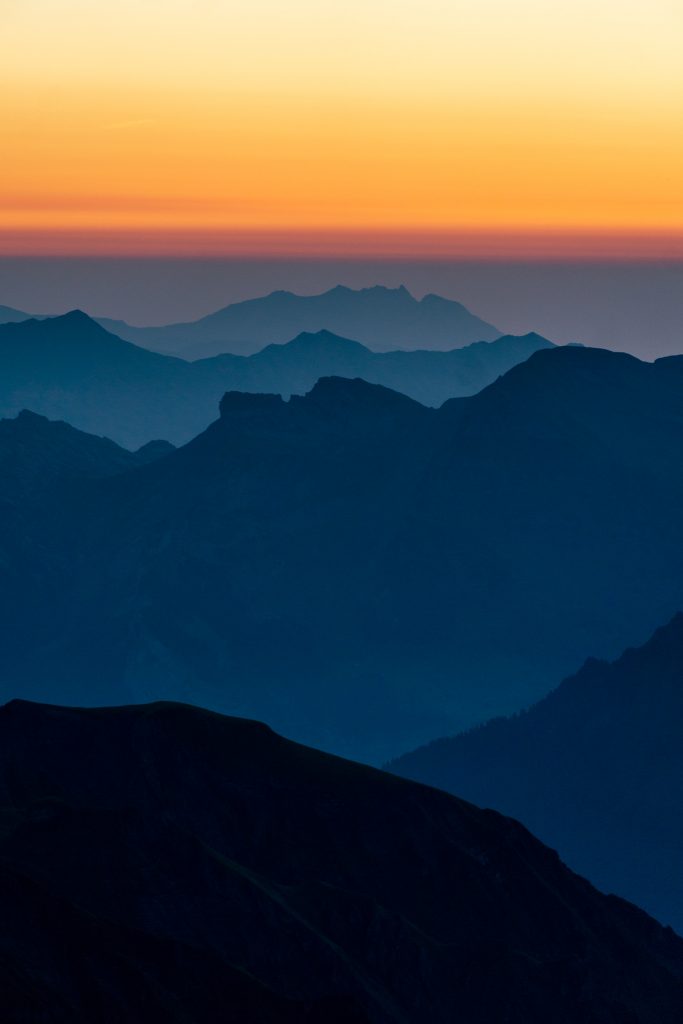
Speaking of personal gear, what did you bring?
Kyle: We both had our work stuff, personal electronics, clothes, toiletries, etc. For mountain gear, I brought running stuff, enough climbing gear to do sport climbing and easy trad, but not much more. We were able to fit all our gear in a single 50 pound piece of luggage. It would have been smart to thrown in crampons and an ice ax even though I did not plan on crossing glaciers, but luckily it was cheap to rent in Aosta.
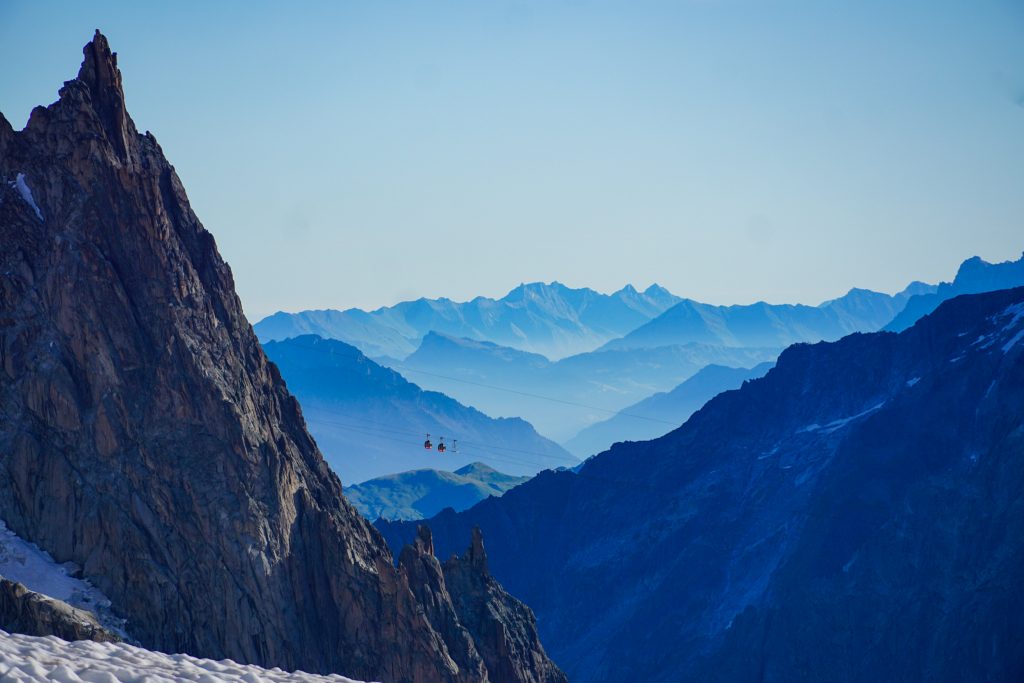
Are the mountains really crowded?
Kyle: This is an interesting question. There are definitely at least some people everywhere. But they seem to be much more spread out than in Washington. In the Alps, basically every valley has good access and is exceptionally beautiful, so there are plenty of places to spread out. There do not seem to be the social media spots that blow up like back home. But it is hard to ever get truly away from everyone and there will always be a few people you pass.
Kelly: On many of the hikes we did, there were surprisingly few people despite the easy access – there are a lot of trails to spread people out. Nowhere was anywhere near as crowded as, say, Snow Lake on a summer weekend. Now, if you’re doing something like taking the Aiguille du Midi cable car, then yeah, that’s crowded. Or climbing Aiguille Index. The crowds there were insane. But most places were surprisingly not crowded!

What was the weather like?
Kyle: We got lucky and had very dry weather. July is actually one of the wetter months in the Alps. They often get rain, clouds, and thunderstorms. It was warmer than normal while we were there, which made our apartments a bit warm at times, but it was not unbearable. With high elevations, there definitely is the potential for cold weather and snow even in the summer, but we were often in t-shirts even at 10,000 feet. It was more humid than the Cascades, but not awfully so like the East Coast.
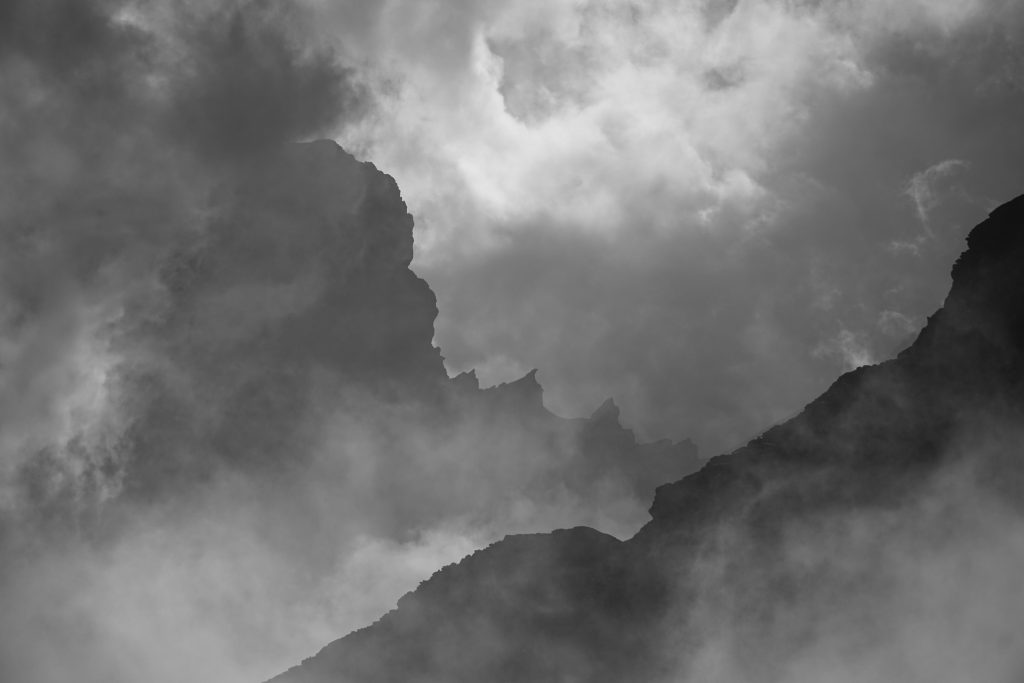
What was the most memorable experience?
Kyle: For me, it was probably getting to climb Arête du Diable. It was so coincidental to be in the same part of the Alps at the same time as one of my idols and get to climb with him. Climbing granite in the Mont Blanc Massif is a bucket list item for most alpine climbers but I did not expect to experience it on this trip.
Kelly: Getting stranded in the Geneva airport when Iceland air kicked us off the plane. This was legitimately more memorable and a better story than any of the hikes we did  maybe because I retold it so many times to people and they were all super horrified, and it was a much longer and more grueling ordeal than any of the hikes.
maybe because I retold it so many times to people and they were all super horrified, and it was a much longer and more grueling ordeal than any of the hikes.
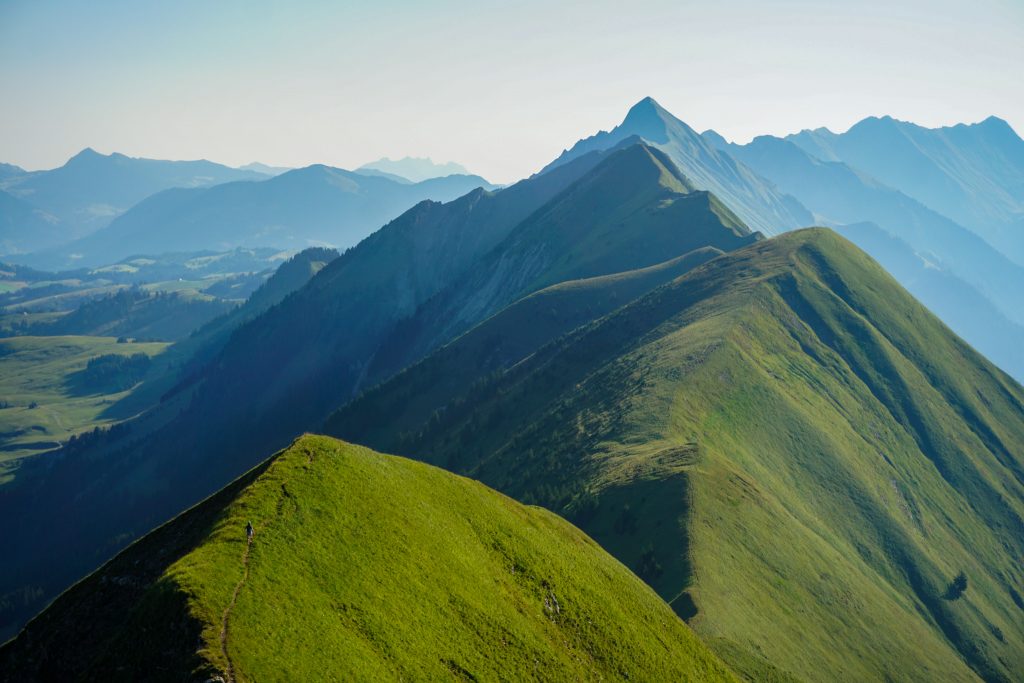
How did you go about planning your activities for this trip?
Kyle: A variety of ways: I talked to friends who had visited the Alps, followed prominent mountain athletes in Europe on social media, and just did tons of nitty gritty research but looking at maps and following whatever caught my eye. Sometimes this led me to obscure trails, but that is part of the adventure! For climbing, we bought guidebooks in Chamonix and Aosta.
Kelly: Kyle enjoys trip planning more than I do. He tried to get me to plan part of it. I can’t plan what I want to do in five months. I don’t even know what I want to do tomorrow.

So are you going to move to the Alps now?
Kyle: While this trip was incredible and I will certainly come back to the Alps, it also cemented my suspicion that I would not really want to live here. I would miss wild places, old growth forests, and the wide open expanse of the American West. In almost every objective sense, the Alps are “better”. But there is a wildness of North America that will always have my heart. Maybe it is just home to me.
Kelly: Maybe if I learn Italian and find a remote job in the European time zone…(just kidding, I’m not moving to Europe).

What would you like to do next time you visit the Europe?
Kyle: Well, if we’re talking about Europe in a whole, I would like to visit Norway at some point and also the Mediterranean Coast. I am trying to personally boycott Iceland because of what Iceland Air did to us. If we’re talking about the Alps, it would be interesting to travel during a different time of year, like spring or fall. The Aosta valley is beautiful and affordable, so it could be fun to have a slower paced vacation here, mixing work and play. There are more areas in the Swiss Alps that seem less touristy, like Furka Pass, which supposedly has a ton of good granite climbing. I also could go back up to the Mont Blanc Massif and climb more alpine routes.
Kelly: Honestly, I wish we could’ve spent more time in cities, just walking around in the city admiring various random sights. We just stayed in small mountain towns and hiked. After seeing some other friends have more diversity of activities on their Europe trips, I was somewhat envious.

Well, folks, that wraps up our Q&A. If you have any more questions, please ask below in the comments and we will try to get them answered. Thanks for tuning in!
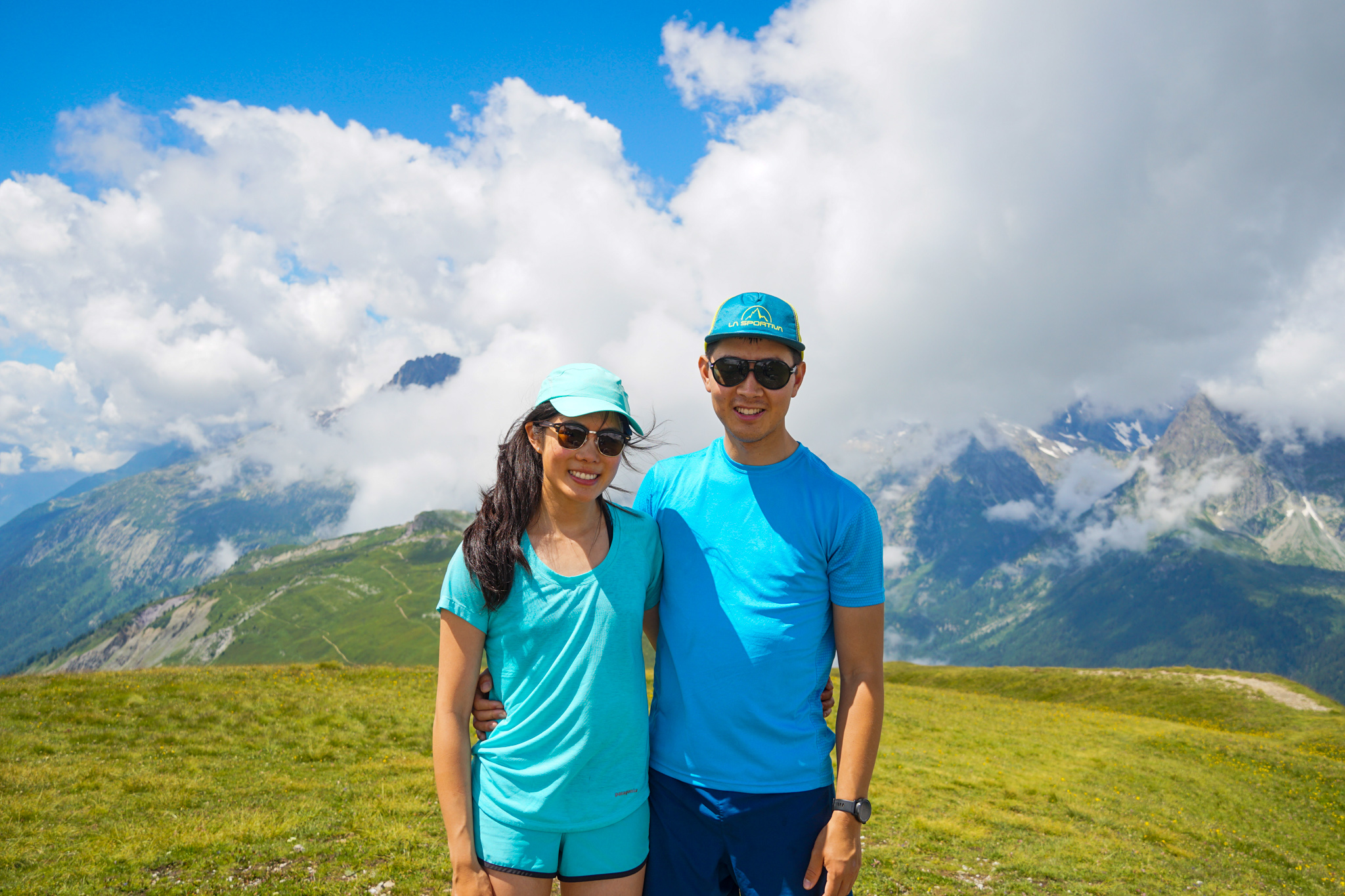
Good write up, Kyle. I’ve met a few European climbers who wanted to move to the US because it does have true wilderness, even in light of recent events/politics, which shocked me. And uh why did Iceland air kick you off the plane?
They had overbooked the flight and so there were 6 more people than seats. Why were we specifically booted? No idea. They said it was random, but basically everyone that was kicked off was a young adult. Might have had something to do with the fact we booked through Alaska Airlines.